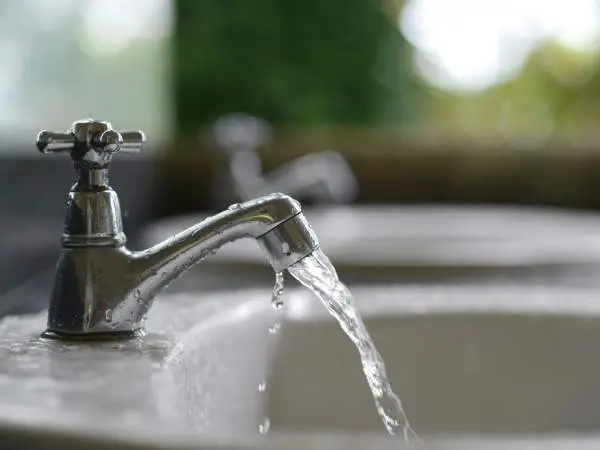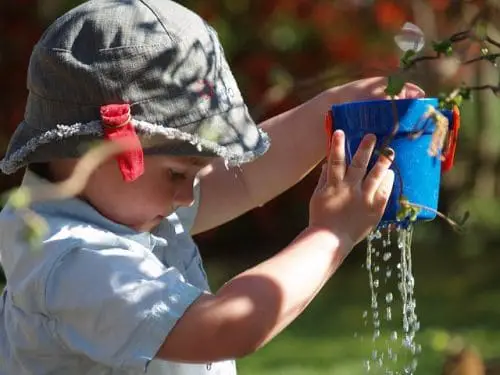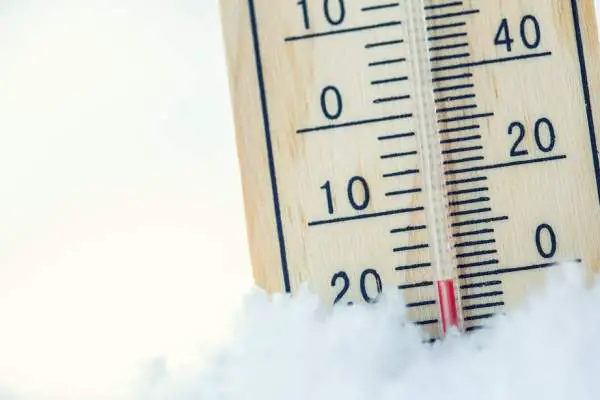Many individuals understand that hydroponics is the growing of plants without soil. Rather, the root systems are either supported in a growing medium or suspended with the tips of their roots dangling in the nutrient-rich water.
One of the most common mistakes new growers make before they fully research hydroponics is the use of tap water. Therefore, this begs the question of whether or not you can use water from a faucet in a hydroponic system?
The answer to this question is yes, water from the faucet can be used, but not as it is. Growers need to carry out additional steps to protect their plants from the chemicals and minerals, which are present, and will negatively affect the health of plants.
Here we will look at the reasons why tap water isn’t ideal for hydroponic systems, what can be done for its preparation so it can be used, and what are the other water options open to growers.
What is in Tap Water?

In most areas, it can be safe to drink tap water; surely, this means it is good enough for plants? However, this may not be the case. In soil gardens, it may be because they are taking the nutrients they need from the soil. In a hydroponic system, the nutrients will be provided in the solution from the grower.
It is because of this that growers need to understand what is in regular faucet water, and why it makes such a difference.
Tap water is treated to remove bacteria and all the impurities. This makes it safe for our use, yet it is these treatments, which render it no use to a hydroponic plant.
Here is the process they generally use to clean and purify water before it is available for home use.
- Chlorine and or Chloramines are added to kill off harmful waterborne bacteria
- Aluminum sulfate is added which makes impurities coagulate (stick together)
- Impurities settle where the clear water is then removed and filtered by various means
- The water has its pH levels adjusted that are safe for human use
Chloramines and Chlorine
Chlorine is the most common addition to tap water to kill off waterborne bacteria. However, this is also one of the micronutrients that are needed by plants, yet in minute quantities. As a result, this would mean a grower would not have to add any; the problem is, in concentrated nutrient mixes, these chloramines and chlorine are already present.
This addition means plants will absorb too much. The results of this mistake can be stunted growth, and the beneficial bacteria on roots will be killed off.
Hard Water and Soft Water
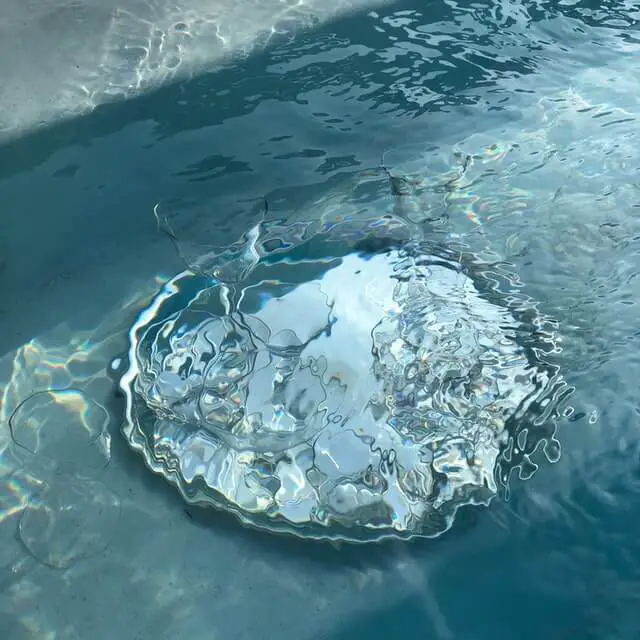
These two terms are often heard and can have a major impact on hydroponics. Hard water is where you can see the accumulation of hard crystalline substances on the ends of faucets and showerheads. It is also the hard water, which leads to the breakdown of dishwashers and washing machines.
When you live in a hard water area, this contains more minerals, and it is these that bind together to form these deposits. When you look at how it affects hydroponic plants, there will be a much higher level of minerals in the water, some of which only need small amounts.
Two primary culprits are magnesium and calcium. While these are necessary for plants to thrive, they are only required in small amounts. With the increase of these two minerals, the PPM (Parts per Million) can increase dramatically. For the majority of water from the faucet, the PPM will be 150 parts per million as a minimum of salts that are unwanted.
This causes problems with nutrient absorption in plants. Most of the nutrient mixes you can purchase are designed to be mixed in pH-neutral water. When the faucet water has an increased pH, this can cause a nutrient lockout. Issues you can see are wilting plants or worse.
If growers attempt to adjust the pH levels for hard and soft water, they can complicate matters for themselves. The pH adjusters will contain potassium and phosphorous which are common nutrients in the mixtures.
To deal with hard water problems, there is usually only one course of action. That is the use of a Reverse Osmosis system or other filtration systems to remove impurities and bring water back to a neutral pH level.
Hydroponics and the Use of Chelates
When companies make the nutrient solutions, they need something to make sure these are suspended in the solution. This is the purpose of chelates. If it weren’t for these, there would be some of the system elements that begin to latch onto each other. Once this happens, they become useless to the plants.
Chelates are formed in several ways and can be chemicals such as ETDA or an organic compound like humic acid. One of the key problems here is that Chlorine is a micronutrient and will be affected by the chelates. Once it meets them, there is more likely uptake of this from your tap water into your plants.
Preparing Tap Water for Hydroponics Use
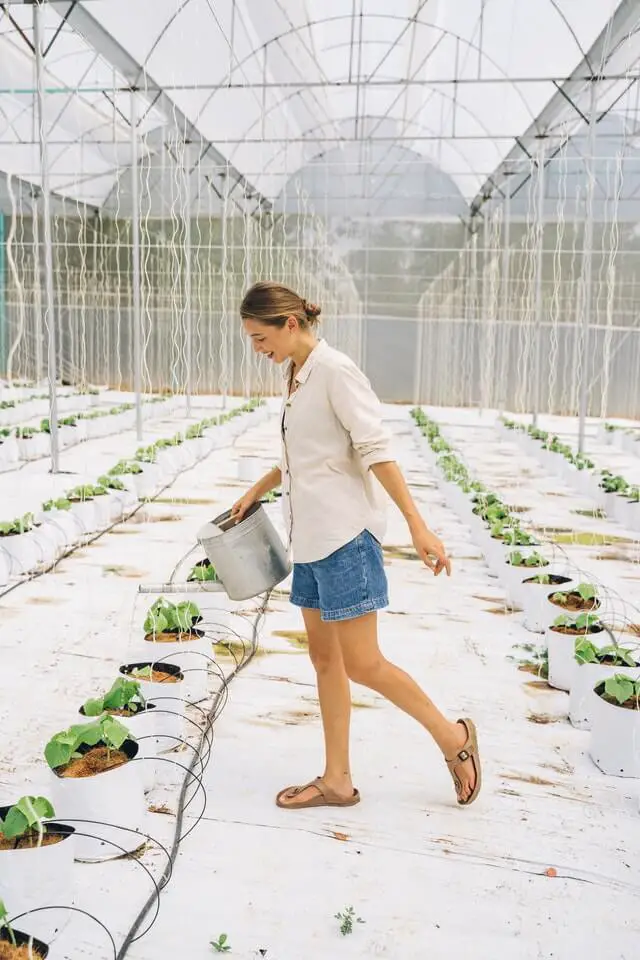
There are a few ways you can prepare water from the faucet for use in a hydroponic system. This does depend on what you are looking to clear from the water, and each element could take another step of preparation.
Removing chlorine from water can be quite simple yet it is a lengthy time-consuming process. The first step for any of the processes is to find out what your local municipal water supplier does to their water in way of adding chlorine or chloramines.
Here are the ways to begin preparing water from the faucet for use in your hydroponic system.
Removing Chlorine
Although this takes time, it can be one of the easiest things to remove from tap water. All you need to do is let your water sit in strong direct sunlight for a period of 24-hours. Here the UV rays break this down and the chlorine can escape from the water. This off-gassing is easy yet if you have large amounts of water to deal with, then it could be difficult to accomplish.
Removing Chloramine
This compound doesn’t break down in the same fashion. However, it can be easy to treat water if it has been treated with chloramine. You can buy Campden Tablets, which you add, one tablet per every 20 gallons of water. The good thing with these ae they can also remove both chloramines and chlorine. Other ways are to run your water through an activated carbon filter. These are similar to water filters you purchase to cleanse drinking water.
Hard Water and PPM
This treatment can be one of the hardest as it takes repeated testing. The aim is to remove calcium and magnesium from the tap water. A basic water filter can suffice for small systems, yet you will need to change these quite often. The next way is by using reverse osmosis filters. These can be fitted to home plumbing systems, so you can gain benefits in other areas.
If you buy one that is specific for hydroponics use, these come with carbon and sediment filters in place. While these can be costly, they work out cheaper than losing crops because of using tap water in your system. Another downside is they can produce wastewater while they are producing clean water.
Additional Water Solutions
Here are a few other ways you can get safe water for use in your hydroponic system.
Harvesting Rainwater
This can be one of the most cost-effective ways of collecting water for your indoor garden, but a water collection system will need some construction to be sure it leaves you with the cleanest possible water. Building a system can be as easy as placing large drums at the bottom of downspouts. Nevertheless, you will still need to make sure excess water can escape down the drains as you can cause flooding around the home if you bypass your drain system.
One thing to note is there are some local laws, which dictate how you can go about collecting rainwater. Before commencing any rainwater collection system, check local and federal regulations.
Distilled water
This can be purchased almost anywhere and is seen as a great option for its ability to provide a sterile environment for hydroponics. None of the previously mentioned contaminants is found in distilled water, yet you may need to be wary of the lack of calcium and magnesium, as all traces of this will be removed. If your nutrients don’t contain enough of these two minerals, you can purchase a dedicated calcium and magnesium solution to help adjust these levels. Care should be taken as you can be just be creating hard water again.
Deionized Water
This is created by taking regular water and exposing it to electrically charged and processed to remove all of the excess salts from the water. It is very pure and after treatment leaves you with a solution that is very similar to distilled water.
Conclusion
New growers need to understand that water from the faucet is very different from other forms. In some areas, it may be suitable for use, yet a few miles down the road can be a very different story. Water is the lifeblood of any hydroponic system, and if this isn’t right, to begin with, then there will be no going forward to have a successful garden.

